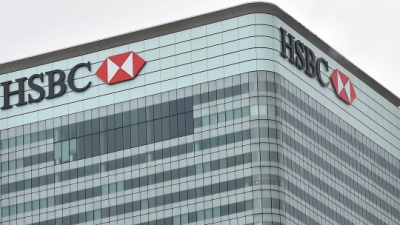
As we navigate this new year, the headwinds from slowing growth and higher rates that have been plaguing investors will remain key market drivers, but while the cyclical outlook remains a major challenge, we are starting to see some silver linings.
The Fed policy tightening cycle is moving closer towards the end.
US CPI inflation has fallen short of consensus estimates for two consecutive months in October and November showing signs that inflation is peaking.
While headline inflation and core goods prices are expected to fall this year, services inflation will stay sticky due to rising rents and wage growth.
This means that the Fed will slow its rate increase and perhaps keep policy on hold for 2023.
What could this spell for 2023?
1. End of the USD bull
We believe the USD bull run has come to an end on the back of peaking US rates.
Rate differentials between the USD and other G10 currencies are unlikely to widen further, and this removes the main tailwind for USD.
We hold a neutral view on the USD and are bullish on the JPY, SGD and BRL.
We expect neutral outlook for the EUR, GBP and RMB against a softer USD in 2023.
2. Rebalancing positions towards bonds ahead of peaking interest rates
After the sharp spike in bond yields in 2022, we find the most substantial improvement in long-term expected returns from bonds versus cash and equities.
Hence, we are overweight in fixed income and hold a full overweight position in investment grade bonds across developed markets, emerging markets and Asia with preference for short-to-medium (2-5 years) duration.
There are attractive risk-reward and diversification merit in high grade bonds relative to equities, as the deteriorating economic cycle raises earnings uncertainty.
3. Building recession–resistant portfolios
As cyclical risks will remain high until at least the first quarter of 2023, investors should be focusing on quality companies that have a strong balance sheet and the margin power to generate strong earnings, even as input costs rise and growth slows.
Furthermore, we want to be positioned in quality companies that will benefit from structural growth trends such as the sustainability revolution.
4. Risk diversification to mitigate volatility
The global economic slowdown will remain a key headwind for stocks and global equities for some time in 2023, and just like in preceding years, there will be bouts of geopolitical tensions and financial stability risks in 2023.
A diversified portfolio with high-rated bonds can provide balance to mitigate uncertainties.
5. Build durable dividends
Dividends can substantially add to total returns, especially when the potential for sustained upside in equity markets is limited.
Of course, as the cycle slows, it is important to select companies that have sufficiently strong cash flows to pay out constant or growing dividends.
6. Position for China’s reopening
After China made significant policy pivots to ease the zero COVID restrictions and step up funding support for the property market, we now forecast China’s GDP growth to rebound to 5.0% in 2023 and further accelerate to 5.8% in 2024, up from 3.0% in 2022.
We want to be positioned for China’s reopening winners –quality industry leaders in travel, airlines, hospitality, food and beverage, gaming and mass consumption sectors.
7. Bullish on Asia
Against the backdrop of synchronized global downturn, Asia ex-Japan stands out as the outperformer and the only region projected to deliver GDP growth acceleration to 4.3% in 2023 from 3.5% in 2022, driven by economic reopening in China and Hong Kong as well as solid growth in the ASEAN region.
With the reopening of Asia well underway and on the road to recovery, investors can look to Asian equities in China, Hong Kong, Indonesia and Thailand.
8. ASEAN Tigers
The ASEAN economies are showing silver linings of resilience with a strong consumer spending outlook amid continued economic reopening.
There are growth opportunities in consumption companies, infrastructure, ASEAN banks and Singapore REITs.
ASEAN is now a more economically integrated region through the Regional Comprehensive Economic Partnership, and ASEAN economies can also benefit from the reconfiguration and regionalization of Asia’s supply chains.
9. Brazil’s recovery
The Brazilian central bank is expected to cut interest rates in the second quarter of 2023, after inflation has been brought under control, so Brazilian equities, local currency and hard currency bonds are expected to see some growth.
Brazil, through its exports, will also benefit from the growth recovery in China next year.
10. Sustainability revolution
COP27 and COP15 have illustrated that climate change and biodiversity are impacting each other and addressing the cause of either will tend to help address the other challenge.
Much more needs to be done urgently and it has to be a sustained effort if we want a chance to hit the 1.5 °C climate target in the Paris agreement.
The investment required to get the world on track for net-zero by 2050 must accelerate to over US$4 trillion annually by 20301, not only in renewable power generation, but the entire clean energy value chain.
It’ll be wise for investors to include quality companies that are aligned with sustainability goals in their long-term strategies.
Reference:
(James Cheo is Chief Investment Officer for Southeast Asia, HSBC Global Private Banking and Wealth.)
ADVERTISEMENT
ADVERTISEMENT







































